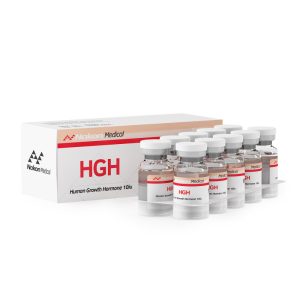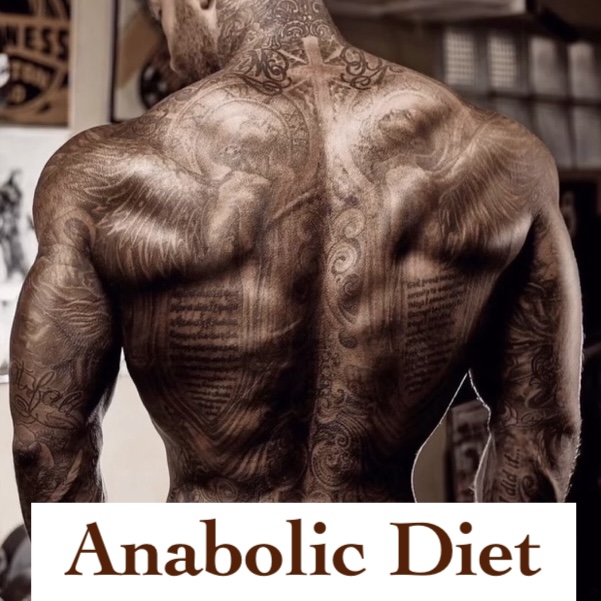Dry Fasting
There are a lot of misconceptions and myths about dry fasting and that’s why a lot of people either don’t know how to do it correctly or avoid it altogether. For example, there’s a misconception that dry fasting will result in muscle loss. In fact, almost any form of diet will get a bad reputation for muscle loss. While this is not true, it is also important to understand that dieting and fasting are not the same things.
Now, we’re going to share how dry fasting can be considerably muscle-friendly, and in fact, may actually help achieve your goals. In this article, we’re going to talk about dry fasting, whether it can cause us to lose that hard earned muscle, its benefits, and side effects.
For example, it is important to realize that muscle loss during dry fasting is very minimal. The body is mostly searching to use fat stores for fuel instead. Besides that, dry fasting is also going to increase HGH (Human Growth Hormone) secretion. With more HGH levels, you are further increasing and preserving muscle mass.
- PS: You can quickly boost your HGH levels with the help of the best HGH products for sale from Cycle-Gear.to.
How Does Dry Fasting Preserve Muscle Mass?
Most people think that being deprived of nutrition, our body starts breaking down muscle into glycogen to use it as energy. While this is true in some cases, that’s wrong in regards to dry fasting. With any type of fasting, your metabolism is going to switch modes and will start using the fat stores to get the energy it needs. One study regarding starvation proves it.
Another study regarding 70 days alternate day fasting proves that the participants lost a substantial amount of fat, but their muscle mass dropped by just 0.1 kg (from 52 kg to 51.9 kg). Considering the amount of fat they lost, that’s nothing.
Other studies regarding water fasting prove that the body doesn’t even start to eat into the muscle after a 30-day period. Although protein synthesis did decline over time, it didn’t drop to 0. When you are fasting, the body switches from glucose metabolism to fat metabolism.

Dry Fasting vs Water Fasting: Comparison
The results suggest that with dry fasting, you can achieve the same results through metabolic changes in a third of the time. This means that the results you can see from a 30-day water fast, you can achieve in a 10 day with dry fasting.
When you are fasting, the body is preparing to shut down to preserve energy. That’s exactly what happens during calorie restriction diets. Your body is also going to create hormonal shifts during fasting. This is why your body’s metabolism increases, shocking the “fight” or “survival” mode of the body. This was proven by a study in which, after 4 days of fasting, the body was able to use 10% more energy than when started.
This makes sense even if you look at it from an evolutionary standpoint. Cavemen were going days at a time without food. If their bodies continued to shut down, humanity would have never lived through winter. Instead, they were preserving energy to… fight off mammoths, eat and live.
As said, one of the hormones that will get a boost is the Human Growth Hormone (HGH). This is one of the most muscle-friendly hormones, which is obvious from its name alone. HGH is the “fountain of youth” increasing energy levels, improving your skin and hair conditions, making you stronger, and more alert, improving cognitive function, and improving sleep quality. HGH also preserves muscle mass. In short, the more HGH, the more likely you are to preserve and build muscle!
One study provides that one day of water fasting can boost HGH secretion by 2-3 times! With dry fasting, HGH secretion would be even higher! Our bodies are doing it in order to prevent muscle loss. We also need HGH to grow muscle, but we also need nutritional values to rebuild and grow muscle!
Refeeding…
This explains why refeeding is so helpful. A lot of athletes and bodybuilders have discovered that when done right, you can increase muscle mass when implementing any type of fasting into your routine. You’re basically fasting to increase HGH levels, then you’re refeeding (providing your body with the nutrients it needs to grow muscle).
Studies indicate that having a calorie deficit of 30-35% per day 5 days a week, then refeeding (0% calorie deficit – calorie maintenance) 2 days per week (with a total calorie deficit of 25% per week), you manage to lose a lot of fat and preserve most of your lean muscle.
Working Out During Dry Fast – Will I Burn Muscle?
Indeed, you may burn your muscles if you’re working out hard and dry fasting. That’s because when you work out, you’re basically causing micro tears in muscles and then you do not feed with what they need to grow.
So, the general rule here is to have light workouts only if you’re going to exercise. During a dry fast, you should only have walking, yoga, light resistance training, etc. These are fine because muscle loss from these types of exercises would be minimal.
However, if you were to do a lot of HIIT or heavy weight training during a dry fast, then you’re going to use all of your energy too quickly, and that energy doesn’t come from fat to perform the HIIT or strength training.
When your body needs a sudden burst of energy, the body relies on muscular tissue for that fuel. Then again, that’s true from an evolutionary standpoint. Cavemen would go days without food and their bodies were taking energy from fat. When they were about to fight a wooly mammoth, their bodies were using muscles, which then they quickly replenished stores from eating. This process is known as gluconeogenesis (where muscles break down into protein and then into glucose to use as fuel).
Will you burn muscle by limiting food intake?
Well, it depends. The answer could be yes or it could be no.
If you were to completely limit your food intake, then yes, you would burn muscle. This is not the same as partial or minimal food limitation. Dieting and fasting are not the same thing. You can lose muscle mass very quickly when you are not dieting right, despite the fact that you’re eating.
Diets that will reduce your calories to 50-70% of your daily intake will not lead to the same metabolic results that you would achieve during fasting. This basically means that you do not get the same metabolic or hormonal benefits to prevent muscle loss. This explains why people who reduce their calories by that much tend to regain all the weight back soon after stopping their diet.
What Affects Muscle Loss During a Dry Fast?

Duration
The length of a dry fast is going to have an impact on how well your body preserves the muscle. When HGH levels are secreted during the dry fast, the hormone will protect the muscles. At the same time, remember that there is no glucose or insulin to help synthesize protein which helps build muscle.
This is the reason why most of the muscle that you can regain is at the refeeding stage. If the HGH levels are still high and you eat (correctly, as it depends on what you eat), then the body receives all the nutrients it needs to build muscle mass. It has the glucose, insulin, protein, and amino acids to continue growing muscle.
This is the reason why you’d see the best results by dry fasting in short periods at regular intervals. For example, the most beneficial method of muscle preservation and even muscle growth is when you’re going for intermittent dry fasting for 12-24 hours. Here are popular dry fasting periods (methods) that seem to work very well for a lot of people:
14-16 hours per day, 18 hours three times a week, and 24 hours twice a week.
Body type
The duration dictates whether your body will start to burn muscles for energy, but it is also your body type. We’re all built differently, with different body types and different responses to food, fasting, and so on. The body type will affect the rate you burn muscle too. For example, someone who is overweight with excess fat is going to be more likely to burn more fat than muscle. Simple because there is a large reserve. The human body is smart enough to use fat instead of protein. Protein is the functional tissue that will provide us with energy and strength in moments when we really need it (like fighting mammoths), but fat is simply energy storage.
Dry Fasting Conclusion
Based on all that information and all those studies, it definitely seems that dry fasting can be highly effective for your body’s goals. At least, when done correctly. It is obvious that the results will vary because there are a lot of variables to consider such as the body type, duration, type of fasting, dieting, your everyday activities, and so on.
Nonetheless, dry fast can be highly effective at burning a lot of fat and still keep those gains. A lot of studies prove that.
In the end, we do know that dry fasting can be a bit too much, too confusing, or even too drastic. Especially for beginners. That’s why we’re here for you at Cycle Gear.
You can get the gear for the most successful cycle of your life. We provide 100% real and best quality anabolic steroids, cutting compounds, fat burning, and weight loss products, as well as HGH to boost those levels and other PEDs. Moreover, at Cycle-Gear.to you can get them all for the best prices on the market. All these compounds are highly effective in helping you get shredded, bulk up, and get stronger.
Get what you need today from Cycle-Gear.to and you will save money while ensuring you stay safe (as long as you follow our recommendation in cycle advice) and get huge gains while burning that fat off.









